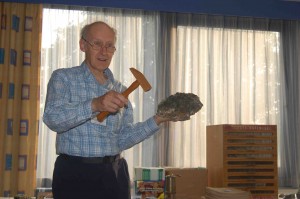An auction of mineral specimens from the Trevor Bridges collection will be held on Saturday 1st August 2015 at Salwarpe Village hall, Worcestershire, WR9 0AH.
Roy Starkey is managing the sale and Roy has produced a catalogue and supporting information for people wishing to bid for lots. Further information can be obtained from Roy at: roy.starkey@gmail.com
Please note that you must register with Roy in advance of the sale. The deadline for registrations is Friday 24th July. Please do not simply turn up on the day, as you will not be able to bid.
